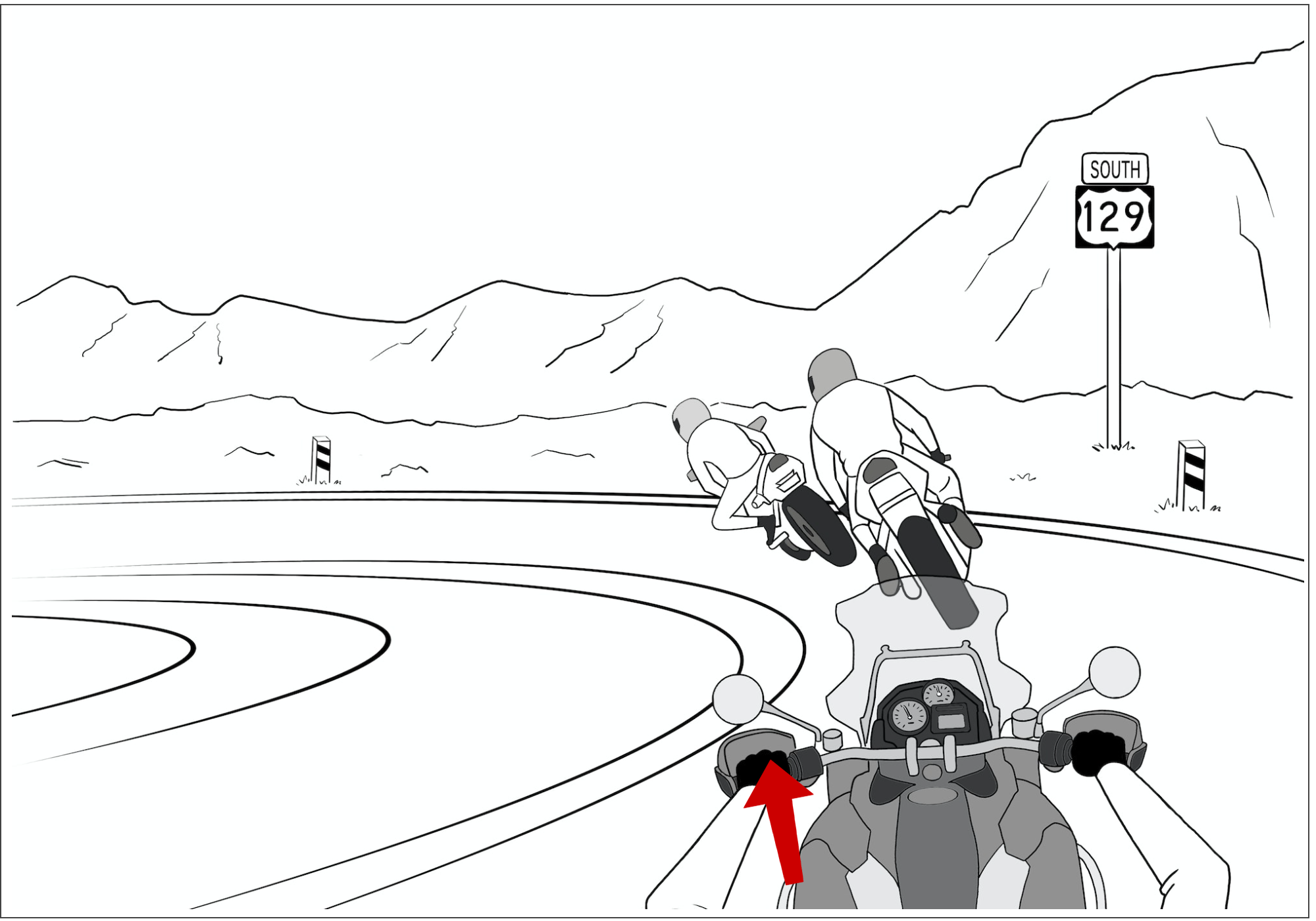Tightening a Turn Using Countersteering: The Power of Trusting Your Tires
written by David Mixson
Curves are tough on motorcyclists. According to a Florida Department of Transportation Report published in 2018, 57 percent of fatal single-vehicle motorcycle crashes occurred in curves.1
The part of this statistic nobody wants to mention is that when riders crash in curves (by themselves), it’s usually their fault—good ole rider error. Sure, there could be debris on the road or an animal jumped out, but that’s rare.
Most single-vehicle crashes are due to rider error.
See Countersteering Mastery: The Ultimate Guide to How Motorbikes Turn for more information about the physics of countersteering.
A common single-vehicle crash scenario.
I devoted an entire section in Motorcycle Smarts to countersteering for a reason. Countersteering isn’t just the way you control your motorcycle in normal conditions. It’s how you control your motorcycle to avoid a crash.
Let’s say you’re going around a sweeping curve to the left, have misjudged your speed, and you’re going wide. See Figure 1 (below).

(Push on Left Handlebar to Tighten Turn)
In this situation, you need to act quickly and (1) look where you want to go deep in the curve, (2) push on the inside handlebar to tighten your turn, and (3) trust your tires to carry you through.
My First Save
Believe me. In the panic of the moment, this won’t feel natural. My first time was exiting an Interstate off-ramp. My turn wasn’t sharp enough, and I was drifting wide into the concrete barrier. I pushed on the inside handlebar and hoped my tires would carry me through.
I made it without crashing and silently thanked my motorcycle mentor, Fred, for teaching me that I could use countersteering to tighten a turn and trust my tires far beyond what I thought was possible.
Head knowledge rocks.
Real Crashes in Curves
I’ve watched lots of videos on YouTube that show riders crashing alone in curves. Typically, the rider enters the curve, drifts wide, and runs off the road and lowsides or highsides.
In the three videos below (none of the riders were badly hurt), the tires didn’t appear to be anywhere close to their friction limits. If the rider had pushed on his inside handlebar (the rider’s left hand in all three videos below), he wouldn’t have crashed. It’s really as simple as that.
Note: Keep watching past the initial crash scene. Ken shows each one in slow motion part-way through. Those are really interesting.
Rider Runs Wide in Curve #1
Rider Runs Wide in Curve #2
Rider Runs Wide in Curve #3
Sure, there may have been some target fixation going on, but the way to avoid all three of these crashes is the same—and it starts with the head knowledge to look where you want to go, and push on the inside handlebar.
Now you know why I’m so adamant that all riders understand countersteering with their head. I probably wouldn’t still be alive without this motorcycle hack. It’s as simple as that.
NOTE: I’ve never (knowingly) watched a video on YouTube that shows a rider being seriously injured or killed. That does me no good, and I think it’s disrespectful to the rider and their family. But YouTube can be a great tool if used correctly—because there’s usually a lesson buried in every motorcycle crash.
Read Next
David Mixson writes about the topics other motorcycle books gloss over. He worked as a NASA engineer for over thirty years and is the author of three books.

We hate SPAM too.
Unsubscribe at any time.

